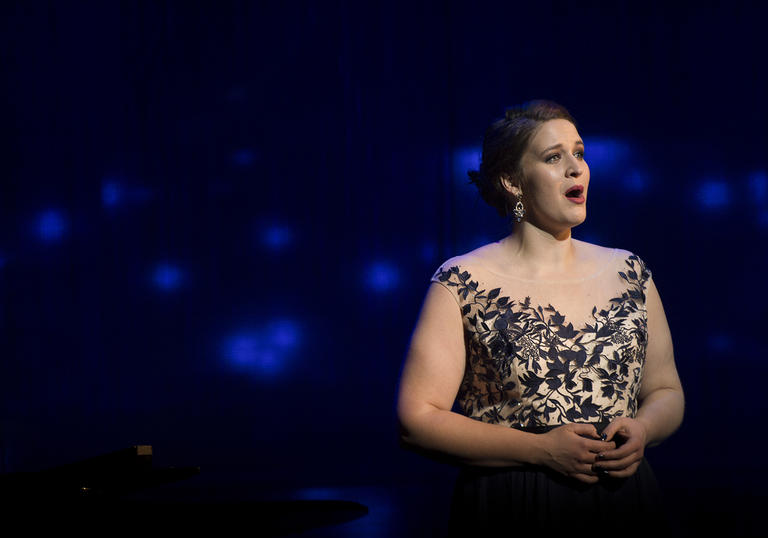
Programme and performers
Gustav Mahler 'Adagio' from Symphony No 10
Alban Berg Seven Early Songs
1. Nacht (Night)
2. Schilflied (Reed song)
3. Die Nachtigall (The nightingale)
4. Traumgekrönt (Crowned with dreams)
5. Im Zimmer (In the room)
6. Liebesode (Ode to love)
7. Sommertage (Summer days)
Jean Sibelius Symphony No 5
1. Tempo molto moderato
2. Andante mosso, quasi allegretto
3. Allegro molto
Performers
Oslo Philharmonic
Klaus Mäkelä conductor
Lise Davidsen soprano
Translations
Dämmern Wolken über Nacht und Tal.
Nebel schweben. Wasser rauschen sacht.
Nun entschleiert sich’s mit einem Mal.
O gib acht! gib acht!
Weites Wunderland ist aufgetan,
Silbern ragen Berge traumhaft groß,
Stille Pfade silberlicht talan
Aus verborg’nem Schoß.
Und die hehre Welt so traumhaft rein.
Stummer Buchenbaum am Wege steht
Schattenschwarz – ein Hauch vom fernen Hain
Einsam leise weht.
Und aus tiefen Grundes Düsterheit
Blinken Lichter auf in stummer Nacht.
Trinke Seele! trinke Einsamkeit!
O gib acht! gib acht!
Text by Carl Hauptmann
Clouds loom over night and valley.
Mists hover, waters softly murmur.
Now at once all is unveiled.
O take heed! take heed!
A vast wonderland opens up,
Silvery mountains soar dreamlike tall,
Silent paths climb silver-bright valleywards
From a hidden womb.
And the glorious world so dreamlike pure.
A silent beech-tree stands by the wayside
Shadow-black – a breath from the distant grove
Blows solitary soft.
And from the deep valley’s gloom
Lights twinkle in the silent night.
Drink soul! drink solitude!
O take heed! take heed!
Translations by Richard Stokes © author of The Book of Lieder (Faber, 2005) and The Complete Songs of Hugo Wolf (Faber, 2021)
Provided via Oxford Lieder (www.oxfordlieder.co.uk)
Artist biographies
In August 2020 the orchestra launched its 101st season with new Chief Conductor and Artistic Advisor, Klaus Mäkelä, whose close rapport with the musicians was immediately evident at his Oslo debut two years previously. For their first project together, they recorded the complete Sibelius cycle, released on Decca Classics to international acclaim – the BBC Music Magazine named it Recording of the Month and described the album as an 'electrifying triumph'.
On September 27 1919, the Orchestra of the Philharmonic Company – later to be known as the Oslo Philharmonic − took to the stage for its first public concert. The Oslo Philharmonic quickly became a powerhouse in the capital's music scene, attracting both international stars and a large local audience. In 1921, Jean Sibelius conducted a series of concerts with his own works.
In the century to follow, the Oslo Philharmonic successfully established itself as one of the major international orchestras, through tours and recordings under the leadership of eminent Chief Conductors, including Herbert Blomstedt, Mariss Jansons, André Previn, Jukka-Pekka Saraste and Vasily Petrenko.
During the pandemic the orchestra also quickly intensified its digital commitment with an online concert series. This led to a tremendous success on both YouTube and social media, and resulted in an important archive of performances with Klaus Mäkelä and guest artists, which received the Norwegian Audience Development Innovation Award for 2021.
This season the Oslo Philharmonic and Klaus Mäkelä give their first international concerts together, including Sibelius cycle residencies at the Vienna Konzerthaus and Hamburg Elbphilharmonie and further performances in both Paris and London, including the BBC Proms.
